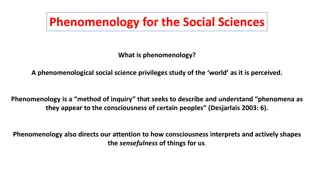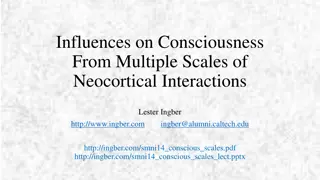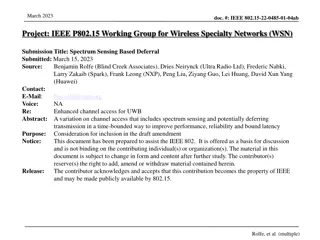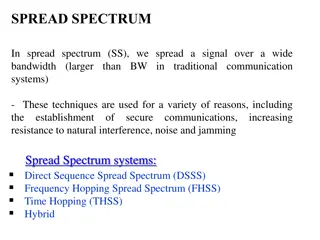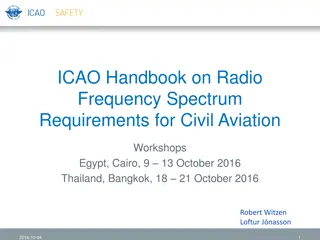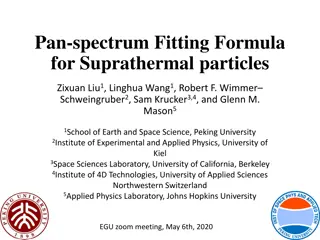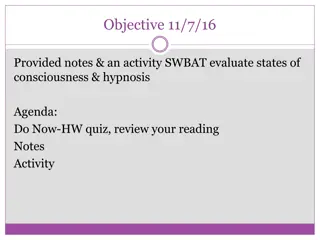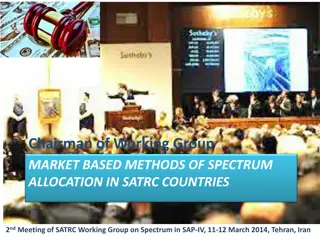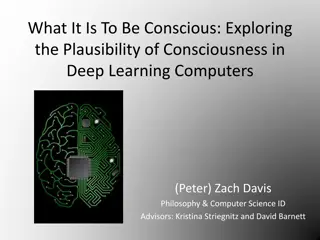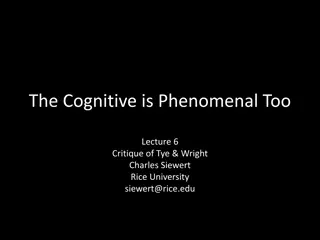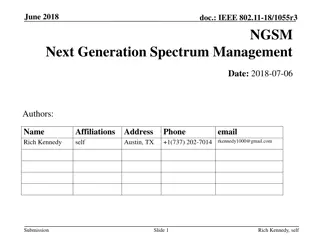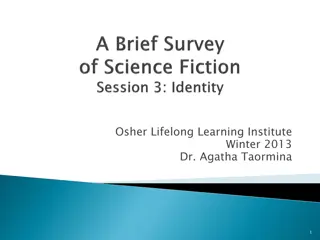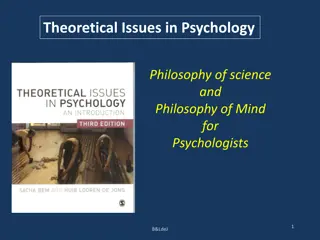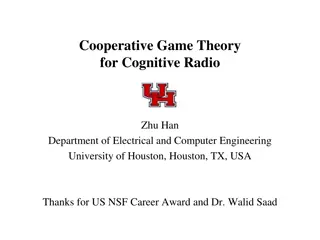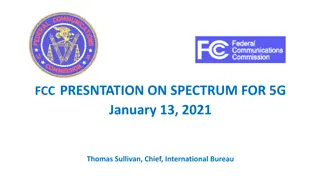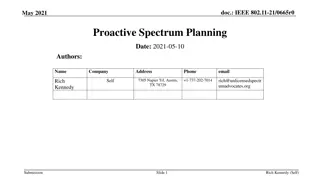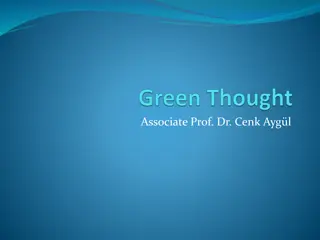The Spectrum of Consciousness Levels
Delve into the nuanced spectrum of consciousness, which spans from low to high levels of awareness. Explore how consciousness fluctuates between being fully awake and unconscious, representing a range of mental states.
Download Presentation

Please find below an Image/Link to download the presentation.
The content on the website is provided AS IS for your information and personal use only. It may not be sold, licensed, or shared on other websites without obtaining consent from the author.If you encounter any issues during the download, it is possible that the publisher has removed the file from their server.
You are allowed to download the files provided on this website for personal or commercial use, subject to the condition that they are used lawfully. All files are the property of their respective owners.
The content on the website is provided AS IS for your information and personal use only. It may not be sold, licensed, or shared on other websites without obtaining consent from the author.
E N D
Presentation Transcript
Consciousness is a spectrum that ranges from low to high levels of awareness. HIGH Very Alert Awake LOW Unconscious
Is the brain state in which a person is being aware of the self and surroundings It is a product of electrical activity of the brain (flat EEG = unconscious)
Level of consciousness (1) Normal Consciousness (state of normal arousal , being fully awake and aware of the self and surroundings )
(2) Clouded consciousness : person conscious but mentally confused e.g., in cases of drug or alcohol intoxication High fever associated (malaria or septicemia , dementia , etc ) .
(3) Sleep : person unconscious ( in relation to the external world & surroundings) but is arousable ( can be aroused ) .
brain Structures involved in the conscious state: 1- Brain stem Reticular formation 2- Thalamus 3- Hypothalamus 4- Ascending projection pathways 5- Wide spread area in the cerebral cortex
1- Reticular formation Set of interconnected nuclei that are located throughout the brainstem (Pons, Midbrain, Upper medulla), and the thalamus Role in behavioral arousal Role in consciousness (sleep/awake cycle) Connect the brain stem to the CC
consists of 3 parts: Lateral Reticular Formation Paramedian Reticular Formation Raphe nuclei (Median RF)
Lateral Reticular Formation Has small neurones Receives information from ascending tracts for touch and pain. Receives vestibular information from median vestibular nerve. Receives auditory information from superior olivary nucleus. Visual information from superior colliculus. Olfactory information via medial forebrain bundle
Paramedian Reticular Formation Has large cells. Receives signals from lateral reticular formation Contains noradrenergic (NA) & Dopaminergic (DA) neurones, projects onto cerebral hemispheres. Cholinergic (Chl) neurones project onto the thalamus
Raphe nuclei (Median RF) In the midline of the reticular formation Contain serotonergic projections to the brain and spinal cord.
Functions of reticular formation: 1. Somatic motor control (Reticulospinal tracts) 2. Cardiovascular control Through cardiac and vasomotor centers of the medulla oblongata 3. Pain modulation Pain signals from the lower body >> >> RF >> >> cerebral cortex RF is origin of the descending analgesic pathways (act on the spinal cord to block the transmission of some pain signals to the brain)
2- Thalamus: Located n the mid-part of the diencephalon Cholinergic projections from the thalamus are responsible for: Activation of the cerebral cortex. Regulation of flow of information from RF to Cerebral cortex
3- Hypothalamus Tuberomammillary nucleus in the hypothalamus projects to the cortex and is involved in maintaining the awake state
RF (Excitatory + inhibitory) areas Excitatory area (Bulboreticular Facilitory) >>>> Sends excitatory signals into Thalamus >>>> thalamus excites almost all areas of the cortex The Bulboreticular Facilitory ( Excitatory ) Area + Thalamus = Reticular Activating System ( RAS) The RAS is the system which keeps our cortex awake and conscious
Anatomical components of RAS The RAS is composed of several neuronal circuits connecting brainstem to the cortex the Originate in the upper brainstem reticular core and project through synaptic relays in the thalamic nuclei to the cerebral cortex As a result, individuals with bilateral lesions of thalamic nuclei are lethargic or drowsy intralaminar
RAS -Lesion in the mid-pons >>>>>>>unconsciousness -Pons (uppers & middle) and midbrain are essential for wakefulness . Figure 6: The Brainstem Reticular Formation and the Conventional View of the Ascending Reticular Activating System. A: The brainstem is located between the spinal cord and the diencephalon. It encompasses the medulla oblongata, the pons, and the midbrain. Earlier histological studies indicated that the central and dorsal part of the brainstem extending from the lower medulla to the level of the upper midbrain had an appearance of a reticulum . Therefore, this region was labeled as the reticular formation. B: According to the conventional view, the mesencephalic reticular formation (MRF) is the origin of the ascending reticular activating system that operates through the intralaminar nuclei of the thalamus (ILN) and activates widespread regions of the cortex. As described in the text, this view is incomplete for several reasons.
Functions of RAS: 1- Regulating sleep-wake transitions RAS suppress ascending afferent activity to the CC >>>>> sleep
2-Attention RAS mediate transitions from relaxed wakefulness to of high attention.
3-RAS and learning The RAS is the center of balance for the other systems involved in learning, self-control or inhibition, and motivation. Provides the neural connections for processing and learning of information, Selective attention (to the correct task)
RAS dysfucntion If RAS is depressed: An under-aroused cortex Difficulty in learning Poor memory Little self-control lack of consciousness or even coma. If the RAS is too excited, Over aroused cortex Hyper-vigilance (sensory sensitivity ) Touching everything Talking too much Restless Hyperactive
Indices of Level of Consciousness Appearance & Behavior : Posture ( sitting , standing ? ) Open eyes ? Facial expression ? Responds to stimuli ( including the examiner s questions about name , orientation in time & place ? & other general Qs like who is the president ? ) Vital signs : Pulse , BP, respiration , pupils , reflexes , particularly brainstem reflexes , etc ) EEG Each of these states ( wakefulness , sleep , coma and death ) has specific EEG patterns Evoked potentials ( in cases of Brain Death ). 37
Alpha waves: Recorded from the parietal &occipital regions Awake and relaxed+ eyes closed 10 to 12 cycles/second. Beta waves: Frontal lobes Produced by visual stimuli and mental activity 13 to 25 cycles per second.
Theta: Temporal and occipital 5 to 8 cycles/second (newborn) Theta waves in adults indicates severe emotional stress Delta: From the cerebral cortex 1 to 5 cycles/second Sleep and in an awake infant In an awake adult indicates brain damage.
Brain Death Confirmatory Testing with EEG Normal EEG ( at normal magnification ) Brain Death ( Flat EEG ,at very high magnification )








